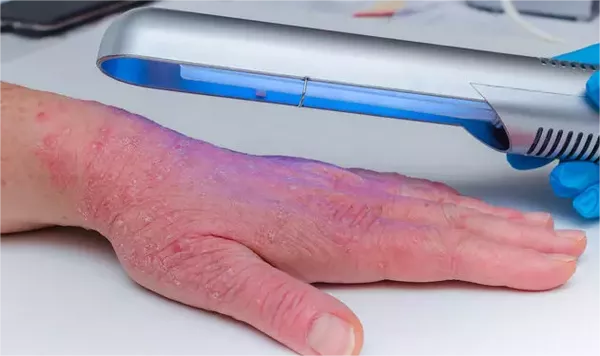Saudi Arabia’s King Abdullah University of Science and Technology (KAUST) has unveiled an innovative artificial intelligence system, SkinGPT-4, poised to revolutionize dermatological care. This cutting-edge technology aims to enhance diagnostic accuracy and treatment efficacy for various skin conditions.
AI-Driven Dermatological Advancements
Xin Gao, a computer science professor and co-chair of the Center of Excellence on Smart Health at KAUST, spearheaded the development of SkinGPT-4. He explains that the primary goal is to detect, diagnose, and recommend treatments for a wide range of skin diseases. In collaboration with Juexiao Zhou, a PhD candidate at KAUST and the first author of SkinGPT-4, Gao emphasizes the potential life-saving impact of this technology, particularly for patients in rural areas with limited access to dermatologists.
Addressing Dermatological Challenges
“Specific challenges in dermatology prompted the creation of SkinGPT-4,” Gao told Arab News. “The variability in skin presentations and the need for specialized knowledge to correctly identify and treat these conditions highlighted the necessity for an advanced, AI-driven solution.”
The team recognized the limitations of traditional diagnostic methods and the potential of AI, especially large language models (LLMs) like ChatGPT, to improve the accuracy and efficiency of dermatological diagnoses.
Functionality and Capabilities
With SkinGPT-4, users can upload their skin photos for diagnosis. The AI system autonomously determines the characteristics and categories of skin conditions, performs analysis, provides treatment recommendations, and allows interactive diagnosis. It can identify conditions with distinct visual characteristics, such as acne, rosacea, melanoma, psoriasis, basal cell carcinoma, and eczema.
The development process began with data collection and preprocessing, followed by model training and validation. “The team collected a large dataset of dermatological images and patient records to train the AI model,” Gao explained.
Technological Integration and Challenges
Integrating diverse data types, including images and text, posed a significant challenge. This required collaboration between computer scientists and dermatologists to ensure the AI could interpret and analyze skin disease images effectively. SkinGPT-4 employs a combination of computer vision algorithms, LLMs, and natural language processing (NLP) to comprehend human languages.
“The model processes dermatological images using a vision transformer (ViT) to identify patterns and features indicative of different skin conditions,” Gao said. “The ViT is aligned with an LLM named Llama-2-13b-chat on our dataset with a customized two-step training strategy. This allows the LLM to understand skin disease images and enable conversational diagnosis with the patient in natural language.”
Utility in Rare and Chronic Conditions
SkinGPT-4 is particularly useful in diagnosing rare skin conditions that general practitioners may not easily recognize. It also offers continuous support for managing chronic skin diseases like psoriasis by monitoring progression and treatment response, adjusting plans as needed.
Impact on Remote and Underserved Areas
Researchers hope SkinGPT-4 will be a gamechanger for remote or underserved areas where dermatologists are scarce. “In a rural community where the nearest dermatologist is hundreds of miles away, a local healthcare provider can use SkinGPT-4 to analyze a high-resolution image of a suspicious lesion and input the patient’s medical history,” Gao said. “The system quickly provides a preliminary diagnosis and recommendations for further action.”
Continuous Learning and Improvement
As SkinGPT-4 develops, it will learn from its own mistakes through continuous learning and feedback mechanisms. “By analyzing misdiagnoses and incorporating corrections, the system can refine its algorithms and improve its accuracy over time,” Gao noted. This iterative learning process ensures that SkinGPT-4 evolves and adapts to new data and emerging trends in dermatology.
Complementing Dermatologists
Gao stresses that SkinGPT-4 is not designed to replace dermatologists but to serve as an evolving and optimizing tool that facilitates communication between patients and doctors. “Our aspiration for SkinGPT-4 is to provide patients with more information about skin diseases while also offering doctors valuable assistance in the diagnostic process,” he said.
In summary, KAUST’s SkinGPT-4 represents a significant advancement in dermatological care, leveraging AI to improve diagnostic accuracy and treatment, especially in areas lacking specialized medical professionals.
Related Topics:


























